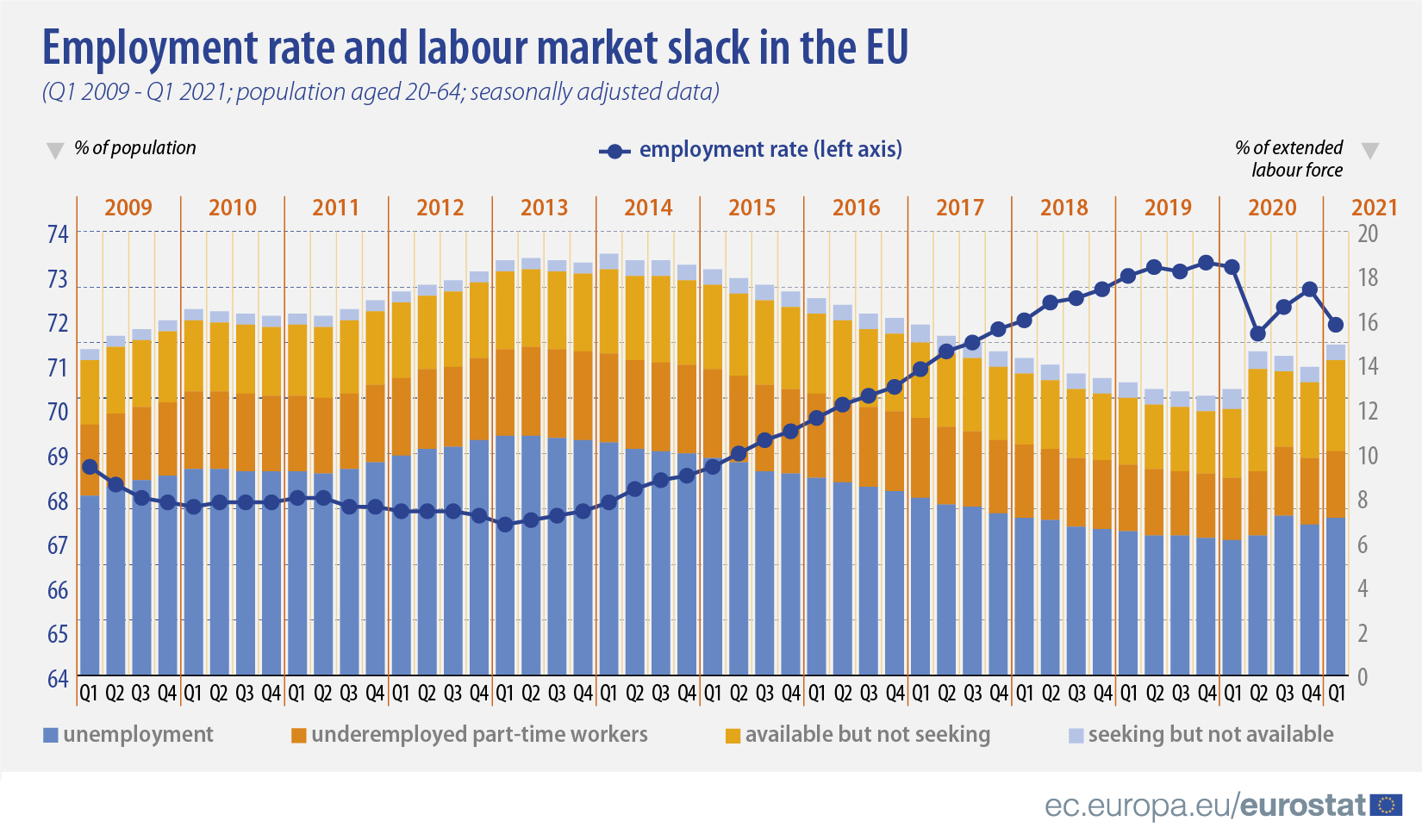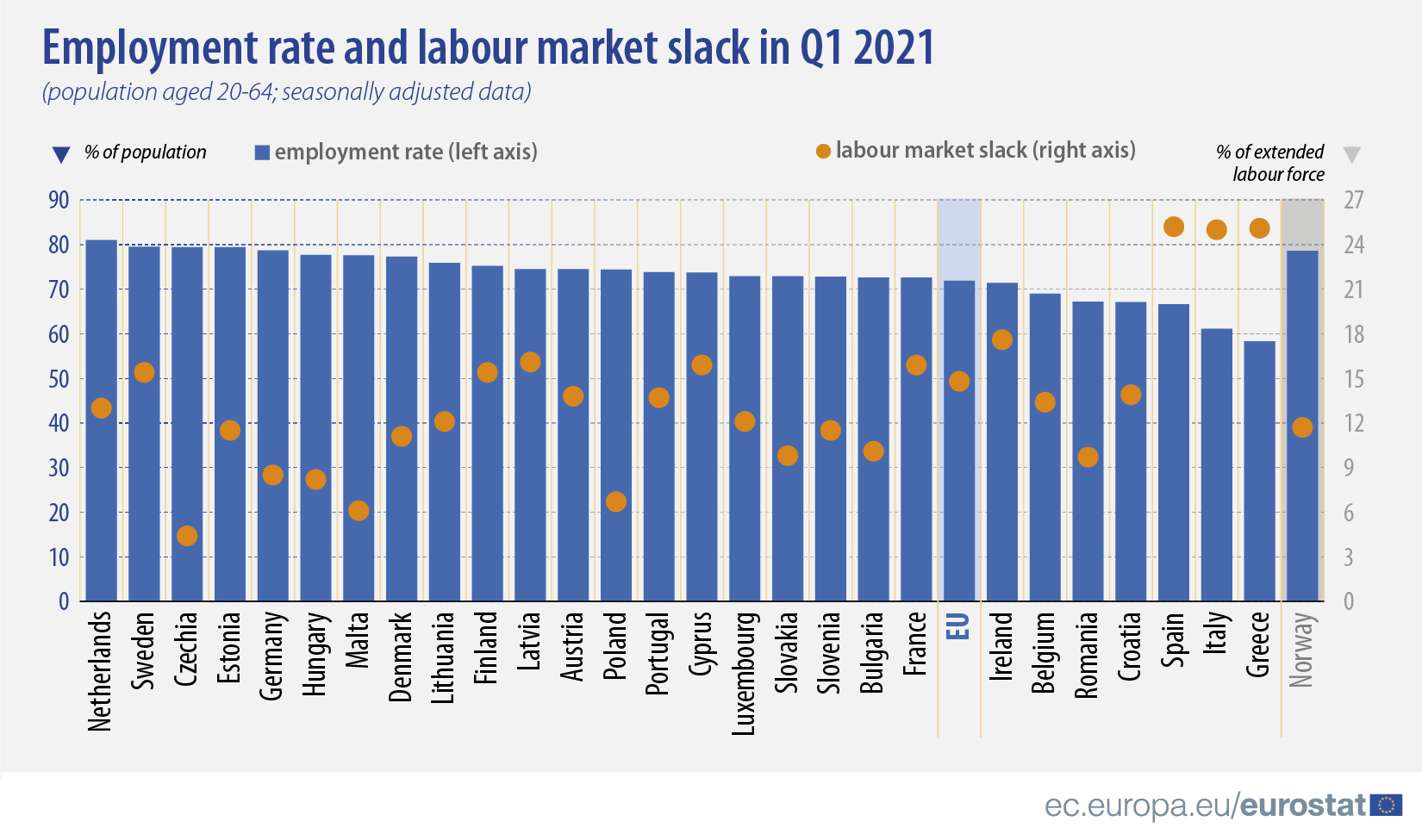In the first quarter 2021, the seasonally adjusted employment rate of people aged 20-64 in the EU stood at 71.9%.
The labour market slack, which comprises all people who have an unmet need for employment, amounted to 14.8% of the extended labour force aged 20-64 in the first quarter 2021. Its main component is unemployment, which stood at 7.1% of the extended labour force.
Underemployed part-time workers made up 3.0%, those available for work but not searching for work were 4.1%, and those actively searching for work but not available to take up work stood at 0.7%, all in percentage of the extended labour force.
This information comes from EU Labour Force Survey data of the first quarter of 2021 published by Eurostat today. The article presents only a handful of findings from the more detailed Statistics Explained article.
Source datasets: lfsi_emp_q and lfsi_sla_q
Employment rates lowest and labour market slack highest in Greece, Italy and Spain
Among Member States, the highest employment rates in the first quarter of 2021 were recorded in the Netherlands (81.0%), Sweden (79.5%), Czechia (79.4%) and Estonia (79.4%).
The lowest employment rates were observed in Greece (58.3%), Italy (61.1%) and Spain (66.6%). These three countries also showed the highest labour market slack rates at 25.1%, 25.0% and 25.2%, respectively.
Total labour market slack was lowest in Czechia (4.4%), Malta (6.1%) and Poland (6.7%).
Source datasets: lfsi_emp_q and lfsi_sla_q
Methodological changes
The labour market indicators published for the first quarter 2021 are based for the first time on the EU Labour Force Survey (EU-LFS) under the new Regulation 2019/1700 on Integrated European Social Statistics (IESS). This new Framework Regulation further improves harmonisation and comparability of labour market data in the EU.
More details can be found here.
For more information:
- This article used quarterly and seasonally adjusted Labour Force Survey (LFS) data.
- Eurostat Statistics Explained article on EU labour market - quarterly statistics
- Eurostat website section dedicated to EU Labour Force Survey
- Eurostat database of EU Labour Force Survey
- The extended labour force is the total number of people employed plus unemployed, plus those seeking work but not immediately available, plus those available to work but not seeking. In this article, data cover population aged 20 to 64.
To contact us, please visit our User Support page.
For press queries, please contact our Media Support.



